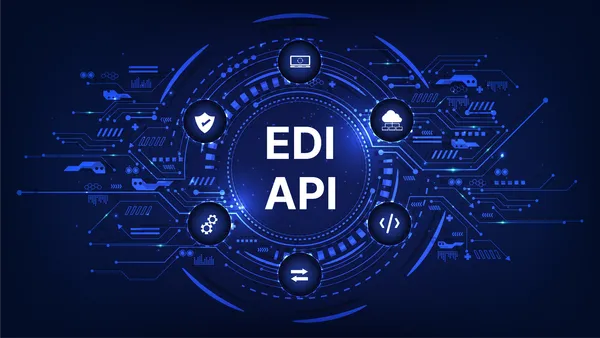Editor's note: The following is a guest article from Brandyn Campbell, Global Director of Business Development at Ephesoft, Inc.
No, the IT department wasn't referring to a cool, carbonated craft beverage when you heard them discussing the merits of an IPA project in the break room last week. Well, maybe they were. But in case you haven't brushed up on the latest trend in operational efficiency and enterprise workflow, IPA — or Intelligent Process Automation — is the freshest buzzword on the block.
The intent of IPA is to minimize the amount of human intervention required on repeatable processes, office workflows and operational tasks.
Efficiency is the name of the game and IPA is the pinnacle of the evolution of the digitally transformed workplace — especially in financial services, including banks, insurance and mortgage sectors, according to PwC.
Due to the rapid pace of technological development, the bar for digital transformation has been a moving target.
Decades ago, people imagined the truly digital workplace would be completely paperless with no need for filing cabinets. While offices never became entirely paperless, they still moved closer to digital transformation with technology like optical character recognition (OCR) and intelligent character recognition (ICR), which led to the widespread use of searchable documents.
Stepping up the pace, form-based content capture solutions, line-of-business applications for document and process management and workflow automation (or Business Process Management) tools hit the market.
Digital transformation started meaning a lot more to a wider variety of business units and professionals. Before companies and government agencies even understood user-defined automation tools, machine learning and Natural Language Processing (NLP) emerged from the chaos.
In 2017, robotics process automation (RPA) began gaining notoriety and finding a more mainstream role the digital workplace. Gartner predicts "spending on RPA software will reach $1 billion by 2020, growing at a compound annual growth rate of 41% from 2015 through 2020. By that time, 40% of large enterprises will have adopted RPA software, up from less than 10% today."
McKinsey explains why RPA is taking off: "RPA helped one large insurance cooperative to reduce excess queue procedures affecting 2,500 high-risk accounts a day, freeing up 81% of FTEs to take on proactive account-management positions instead."
Given the success that RPA technology is seeing, companies are looking for solutions that make RPA tools even smarter and more effective. When other intelligent software pairs with RPA, it gives leeway to IPA, offering an even more innovative and comprehensive option for digital transformation.
IPA is not always synonymous with RPA. Stand-alone RPA systems like Blue Prism, WorkFusion or UI Path do not necessarily represent all the potential that IPA can offer an organization.
IPA encompasses the whole of RPA systems along with other organizational applications like records management systems, ERP platforms and front-end smart capture and processing technology. The goal is true end-to-end automation with all best-of-breed applications interoperable.
While many organizations seek to adopt RPA solutions to take advantage of the potential cost savings and efficiency-generating workflows, business owners often overlook key components of an enterprise automation project. Here are four factors to consider for a successful enterprise IPA project:
1. Application interoperability
To minimize unnecessary human intervention, it is critical that any tool utilized for front-end document capture or data ingestion supports open connectivity with all project systems. Using a platform with open architecture and an extensive API library, allows organizations to build unique, document-centric applications with no limits and end user transparency.
Moreover, out-of-the-box plugins are easily configurable for monitoring content sources — like file shares, cloud storage, document management systems — and for exporting parsed, indexed records after processing, which could be anything from invoicing and contracts to trade finance, loans or claims.
2. Usability
If a tool intended to automate a process is not inherently easier to use than manual work, user adoption will be low. To achieve digital transformation through IPA, capture platforms should be transparent to the users and simple to validate data fields and address exceptions. Building capture workflows should not require coding experience or ability.
Easy-to-use interfaces, drag-and-drop and point-and-click functionality puts the power of the platform in the hands of the users. Users do not have to be coders to be able to train the application how to recognize document types and extract metadata.
3. Supervised machine learning capabilities
It's no secret that business process management applications are incredibly powerful, but they typically require a high amount of pre-configuration, manual data entry and workflow validation to effectively automate processes.
With IPA, users do not have to repeat menial tasks. Applications can learn from users' behavior and actions — like exception handling — to decrease the required human intervention in business processes.
This automation should extend beyond traditional workflow processes, like document routing and approval processes, to other areas. Front-end document ingestion and data capture with supervised machine learning technology teaches the system with feedback, increasing the value of the tool.
For example, a key step in any document-centric workflow is gathering metadata to power downstream decisions and processes.
Instead of a scanner operator or line of business user manually keying in data from an invoice, loan, claim or sales contract, smart document capture tools can automatically identify an email attachment from the AP inbox or an incoming faxed document from a vendor as an invoice and then index all pertinent values.
If exception rules are met or corrections are made to extracted values, the application learns from the user's actions in a validation UI and will be better equipped to manage the text of these documents the next time they are processed.
4. IT burden
Supervised machine learning and NLP have disrupted the document processing and information management industries. The amount of open source technology available muddies the waters of possibility, forcing organizations to consider the build-versus-buy debate.
The increasing accessibility of open source technology makes the "build" side of that debate more attractive.
As such, IT departments are stuck with an exponentially growing list of department-specific applications to build, vendor-provided software applications to customize and operational software and infrastructure hardware to manage.
While some intelligent capture tools require spatial mapping, document template creation, countless samples and a high level of scripting to enable automated metadata indexing, there are alternative solutions.
Removing this burden with template-free, document categorization, classification and data extraction with out-of-the-box plugins for application integration and a rich OpenAPI library for developer support, will save both time and cost. IT departments can minimize the up-front work required to configure document capture workflows.



















